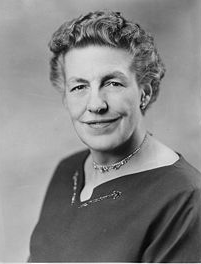Before the ADA and it's sweeping changes to the rights and protections for Americans with disabilities, the Vocational Rehabilitation Act Amendments of 1954 laid the groundwork crucial to the establishment of future reforms.
This essential piece of legislation helped:
- Reshape the roles of the federal and state government in rehabilitation programs for the mentally and physically disabled
- Establish the basis for a working relationship between public and private rehabilitation and expanded the role of the state agency
- Establish funding sources for
- College and university training of rehabilitation professionals
- Improvement and remodeling of rehabilitation facilities
- Research and demonstration grants; increased federal funding to states (3 federal dollars for each 2 dollars from the state)
- And more! Learn all about it HERE.
And the driving force behind all of this was dedicated public servant and social reformer Mary Switzer.
Born in February of 1900, Mary began working for the Federal government after graduating college, working her way up to become the director of the Office of Vocational Rehabilitation in the U.S. Department of Health, Education, and Welfare in 1950 (a time when very few women worked in government at all, much less in high-ranking positions!).
Her vision and foresight effectively shaped much of the core of the US's rehabilitation efforts from the 1950s through the 1970s.
Mary forcefully advocated for the involvement of people with disabilities into the mainstream of American life, and during her 17-year tenure as Director of the OVR , she dramatically expanded the department's budget and focused her efforts on bringing vocational training to all physically and developmentally disabled persons.
She retired in 1970 as the highest ranking female bureaucrat in the federal government[3] and became vice-president of the World Rehabilitation Fund until her death in 1971.
While negotiating the government bureaucracy might not be terribly glamorous, it's dedicated civil servants like Mary Switzer who make lasting change possible, using process and procedure to create a better, more inclusive world.
We at National Inclusion Project fully appreciate the necessity of process and procedure, especially since the creation and launch of our Standards & Accreditation for Inclusive Recreation programs. Our hope is that by offering a clear, defined process for achieving meaningful inclusion, we too can effect lasting change on a larger scale than ever before.
If you'd like to help be a part of that change, we hope you'll consider giving $19 or $54 in honor of Mary Switzer and the 1954 Vocational Rehabilitation Act.
